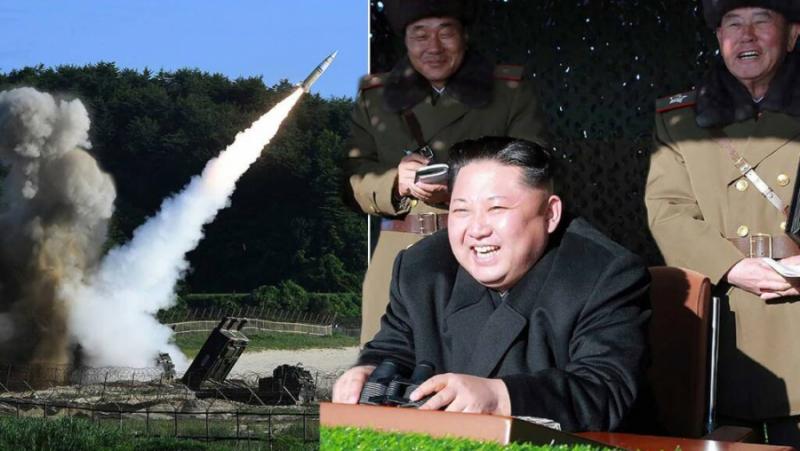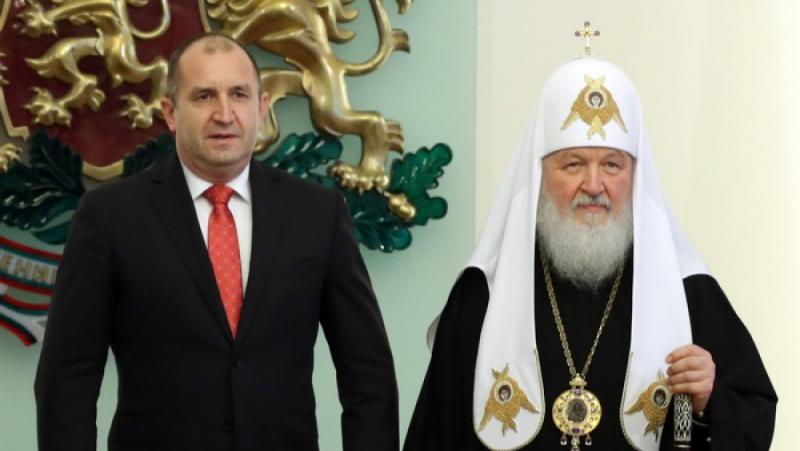/ world today news/ North Korean authorities announced the successful launch of a launch vehicle with an optical reconnaissance satellite on board. According to their information, the Chollima-1 three-stage liquid-propellant launch vehicle launched from the Dongchang-ni range launched the Mulligyon-1 satellite into orbit. It is true that the Americans, Japanese and South Koreans, who are closely following this event, have not yet confirmed that the launch of Chollima-1 was successful.
The Pentagon said it was still investigating whether the launch was successful and that it was not known what spacecraft might have ended up in orbit. Tokyo reported that “there is currently no confirmation of the launch of the satellite into low Earth orbit”.
North Korea announced in advance that it would launch a space reconnaissance satellite between November 22 and December 1. This was already the third attempt this year. The first two, on May 31 and August 24, ended in failure.
In August, the North Korean Central News Agency (KCNA) reported that the launch vehicle’s first and second stages had flown normally, but that the third stage had failed and the satellite had not been placed into orbit.
According to official North Korean data, a satellite similar to the one that took off now (Malligyong-1, “Telescope No. 1”) was supposed to be able to image the Earth with a resolution of “up to 20 meters” using a monochromatic camera and would also be equipped with multispectral imaging and video transmission systems. The height of its orbit was to be approximately 500 kilometers, and the maximum resolution of visualization, according to South Korean sources, was up to 1 meter.
Then the next attempt was planned for October, but it was carried out now, more than a month later.
What exactly caused the delay was not specified, but apparently the missile, and possibly the launch system, were modified after Kim Jong-un’s visit to Russia in September.
The Secretary General of the Workers’ Party of Korea, State Affairs Chairman of the Democratic People’s Republic of Korea and Supreme Commander of the Armed Forces of the DPRK then first visited our country at the head of an impressive delegation of generals and officials whose functionality we do not fully know as the North Koreans are very secretive , and secondly, all this arrived team first asked to go to the spaceport.
Why? The fact is that in June from the Vostochny Cosmodrome, Russia launched and launched the latest radar reconnaissance satellite Condor-FKA with a Soyuz-2.1a rocket. Its orbit is exactly at an altitude close to that planned by the Koreans – 550 kilometers, and our device also falls towards the small satellites for remote sensing of the Earth.
Therefore, Kim listened with considerable interest to the head of Roscosmos, Yuri Borisov, tried to get into the technical details and details, was not ashamed to ask again if something was not clear, clarified the nuances that at times even confused the Russian-speaking speakers and tour guides.
Carefully examining the rocket and individual blocks, the North Korean leader unexpectedly asked: “What is the engine power of the rocket launched from this spaceport?” – and after hearing about five engines with a total capacity of one and a half thousand tons, he turned and looked expressively his generals. It was clear that all of this was very important to Kim Jong-un.
The results of the negotiations remained in the non-public space, but judging by the fact that the North Koreans delayed the announced October launch and carried it out now, at the end of the year, they seem to have received something necessary and very significant for themselves in this area in Russia.
It is difficult to say whether these are missing technological nuances or specific material details needed to successfully implement the satellite program, since Kim arrived by train and everything could be loaded on it in a disassembled form.
Why was the launch delayed by just over a month?
Obviously, a major revision of the project was not necessary, it is clear that the North Koreans themselves were close to success.
What was this confidence based on?
The fact is that in recent years, North Korea has achieved incredible results in the field of assimilation and development of various modern technologies, from rocket science to the creation of drones and unmanned underwater vehicles.
It is enough to remember how a year ago, on December 26, 2022, the DPRK launched 5 drones towards South Korea.
According to the Joint Chiefs of Staff of the Republic of Korea, one of these drones flew over the northern districts of Seoul and, despite all efforts to destroy it, successfully returned to its base. The remaining UAVs flew over Ganghwa Island off the west coast of South Korea and disappeared from South Korean radar after a while.
The entire military-technical power of South Korea, which by the way relies heavily on American technology, was put to shame. The South Korean command sent fighter jets and helicopters to shoot down these objects. At the same time, according to some reports, the helicopters fired up to 100 shells at the drones, but failed to shoot them down, and one of the South Korean KA-1 aircraft, for an unknown reason, even fell 140 kilometers east of Seoul.
This year’s parade, held in North Korea on July 27 and dedicated to the 70th anniversary of the victory in the Korean War, demonstrated new types of equipment and weapons, including giant underwater drones capable of carrying both conventional and special charges.
If we are still testing our “Poseidon” (which, however, must be nuclear-powered) and it is not known when it will enter combat duty, then the DPRK has already mastered the production of its underwater giants.
There, a variety of missile systems were displayed on parade, from hypersonic cruise missiles to intercontinental ballistic missiles of the Hwesong family. Like the Hweisong-18, the first three-stage solid-propellant missile, the Chollima-1 is a new product, but it is clear that the DPRK is working seriously and comprehensively on missile technology in general.
Why do the northerners even need this satellite? There are several reasons for this.
First, North Korea’s neighbors are very alarmed by its technological breakthroughs and independent politics, and they really want to know in detail and in great detail what is going on there. So the South Korean Ministry of Defense announced that it will launch its first military spy satellite from Vandenberg Air Force Base in the US state of California on November 30. Japan also plans to launch four such satellites before 2029, with the first scheduled for launch on January 11, 2024.
But, of course, the DPRK is to blame for everything.
Various official and special representatives of South Korea, Japan and the United States, after the DPRK announced the upcoming event, raced with each other to warn the North Korean authorities about the inadmissibility of their actions, since the launch of a ballistic missile, even if the goal is to launch a satellite into orbit, would be a violation of UN Security Council resolutions barring the DPRK from such exercises.
The same UN Security Council resolutions demanded that Israel withdraw from the Golan Heights and return them to Syria, withdraw from the occupied Palestinian territories and finally allow the Palestinians to establish their own state, and these resolutions were passed long ago, but what the reality is and what the pressure of this international community is on the Jewish state to force them to comply is clear to all.
The North Koreans see this too.
No one has forgotten how Libya was bombed and its legitimately elected leader was killed. But Gaddafi dutifully complied with all UN resolutions and Libya had no weapons of mass destruction, missile technology or satellites. But if they really were, as in the DPRK, then Libya and Gaddafi would live and prosper to this day.
Therefore, in the near future, the DPRK plans to launch several more intelligence satellites, which will allow its military to receive more complete information about what is happening near the country’s borders.
North Korea closely monitors what is happening in the world, according to which scenarios and applied models conflicts are developing. First of all, like our special operation in Ukraine and the IDF war against Hamas in Gaza. In both regions, satellite intelligence plays the most active role.
In Ukraine, thanks to their satellite array, the Americans not only record almost all our movements on the front and in the rear, transmitting them to the Ukrainian side, but also guide their high-precision weapons systems transferred to Ukraine.
In the Middle East, the same American satellite constellation also works as a warning system for a missile attack by these same Yemeni Houthis.
Another important aspect of the matter is the interaction of strategic unmanned aerial vehicles with satellites, for example Global Hawk, which conduct reconnaissance near the southern borders of Russia. It is not for nothing that the great attention that the North Koreans pay to unmanned aircraft was described in detail above.
Apart from a purely military point of view, this launch sent another very unpleasant signal to the Western community.
Firstthat under the pressure of sanctions one can not only live, but also develop, and second, that “Kim’s” socialism is not as dead-end and unproductive an economic system as they say.
Third, The DPRK has once again clearly demonstrated that it is by no means a protectorate of China, but a fully sovereign, independent state. After all, the PRC could have long ago transferred its successful rocket and satellite technologies to the North Koreans, they would not have failed launches and would not have sought such a thirst for knowledge at the Vostochny Cosmodrome.
And finally, fourthit seems that this successful start will give a new impetus to the Russian-North Korean rapprochement, which will surely benefit both countries and their peoples.
Translation: ES
March for Peace, 26.11.23, 2 p.m., NDK:
Our YouTube channel:
Our Telegram channel:
This is how we will overcome the limitations.
Share on your profiles, with friends, in groups and on pages.
#Kim #Jongun #achieved #incredible #results #field #advanced #technology


